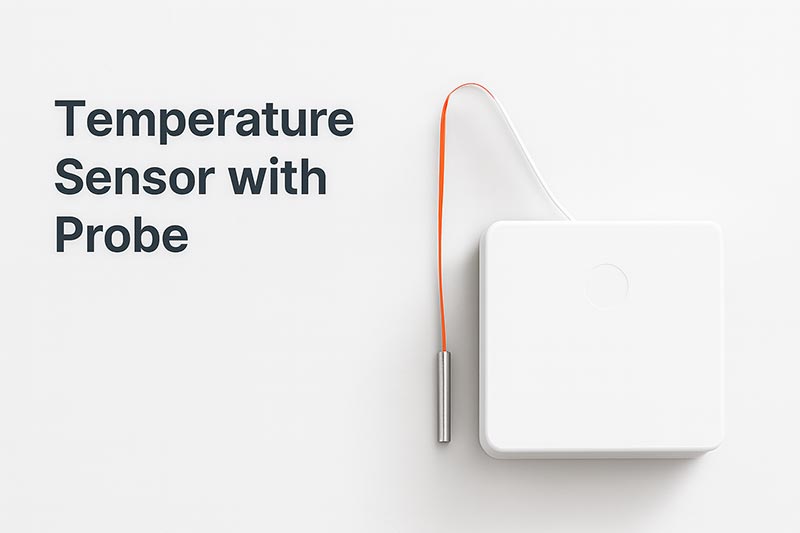Introduction
As energy efficiency and real-time monitoring become top priorities across industries, demand for precise temperature sensing solutions is rising. Among these, the Zigbee temperature sensor with external probe is gaining significant traction. Unlike conventional indoor sensors, this advanced device—such as the OWON THS-317-ET Zigbee Temperature Sensor with Probe
—offers reliable, flexible, and scalable monitoring for professional applications in energy management, HVAC, cold chain logistics, and smart buildings.
Market Trends Driving Adoption
The global smart sensor market is projected to grow rapidly as IoT adoption accelerates in both residential and commercial sectors. Key trends fueling this growth include:
-
Smart Energy Management: Utilities and building operators increasingly deploy wireless sensors to reduce energy waste and comply with stricter efficiency standards.
-
Cold Chain Monitoring: Food distributors, pharmaceutical companies, and warehouses require external-probe sensors for precise temperature control in refrigerators, freezers, and transport containers.
-
Interoperability and Standards: With Zigbee’s strong ecosystem and compatibility with popular platforms like Home Assistant, Tuya, and major gateways, sensors can be seamlessly integrated into larger IoT networks.
Technical Advantages of External-Probe Zigbee Temperature Sensors
Compared to standard room temperature sensors, external-probe models deliver unique benefits:
-
Higher Accuracy: By positioning the probe directly inside critical zones (e.g., freezer, HVAC duct, water tank), measurements are more accurate.
-
Flexibility: Sensors can be mounted outside harsh environments while the probe measures inside, extending lifespan.
-
Low Power Consumption: Zigbee’s efficient mesh network ensures years of battery life, making it ideal for large-scale deployments.
-
Scalability: Thousands of devices can be deployed across warehouses, commercial buildings, or industrial plants with minimal maintenance.
Application Scenarios
-
Cold Chain Logistics: Continuous monitoring during transport ensures compliance with food safety and pharmaceutical regulations.
-
Smart HVAC Systems: External probes embedded into ducts or radiators provide accurate real-time feedback for automated climate control.
-
Data Centers: Prevents overheating by tracking rack or cabinet-level temperatures.
-
Greenhouses: Supports precision agriculture by monitoring soil or air temperature to optimize crop yield.
Regulatory and Compliance Outlook
In the U.S. and EU, industries like healthcare, food distribution, and energy are subject to strict regulatory frameworks. HACCP guidelines, FDA regulations, and EU F-Gas rules all require accurate and reliable temperature monitoring. Deploying a Zigbee probe-based sensor not only improves compliance but also reduces liability and operational risks.
Procurement Guide for B2B Buyers
When sourcing a Zigbee temperature sensor with external probe, buyers should consider:
-
Protocol Compatibility: Ensure compatibility with Zigbee 3.0 and major platforms.
-
Accuracy & Range: Look for ±0.3°C or better accuracy across wide ranges (-40°C to +100°C).
-
Durability: Probe and cable must withstand moisture, chemicals, and varying environmental conditions.
-
Scalability: Select vendors offering strong support for large-volume deployments in industrial and commercial projects.
Conclusion
The shift toward energy-efficient and compliant IoT ecosystems makes Zigbee temperature sensors with external probes a strategic choice for businesses across industries. Devices like the OWON THS-317-ET
combine precision, durability, and interoperability, offering enterprises a cost-effective solution to meet modern demands.
For distributors, system integrators, and energy managers, adopting this technology is not just about monitoring—it’s about unlocking operational efficiency, regulatory compliance, and long-term cost savings.
Post time: Aug-21-2025
